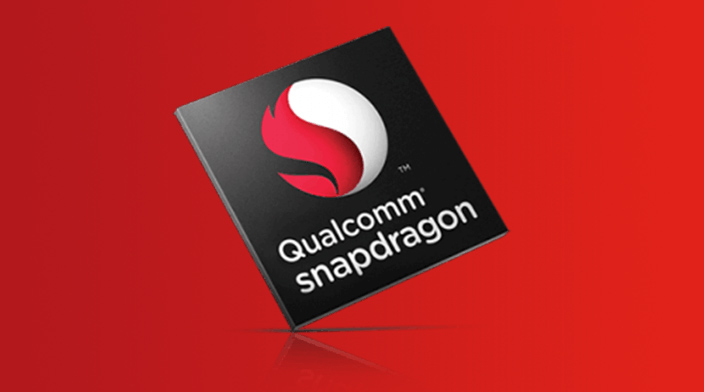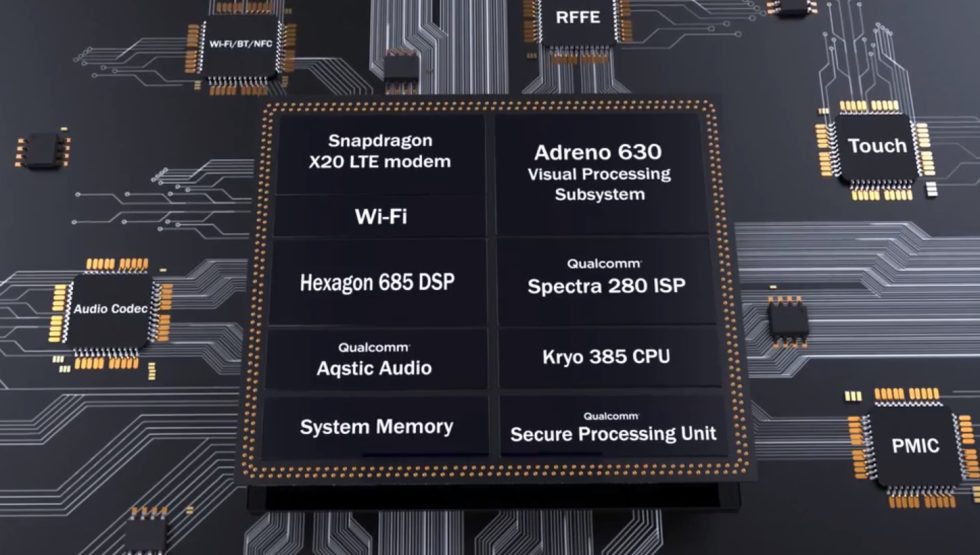
Qualcomm is hosting the "Snapdragon Technology Summit" in Hawaii this week, where it unveiled its flagship system-on-a-chip (SoC) for 2018: the Snapdragon 845. Qualcomm has a near-monopoly on the high-end smartphone SoC market, so unless you're buying an iPhone or non-US Samsung phone, you can expect most 2018 flagship smartphones to be powered by Qualcomm's latest. You might even see the chip in your next laptop, with Qualcomm breaking into the Windows 10 market.
The SoC is manufactured by Samsung on the company's 10nm process, just like the Snapdragon 835. The Kryo 385 is once again a derivative of ARM's Cortex CPU, with four "performance" cores (based on the Cortex A75) clocked at up to 2.8GHz and four "efficiency" cores (based on the Cortex A55) that run at up to 1.8GHz. Qualcomm is boosting the performance core clock speeds by 19 percent over the Snapdragon 835, but thanks to a CPU redesign, Qualcomm is promising a "25-percent performance uplift" over the previous generation. The CPU also gets a new 2MB L3 cache and 3MB of system cache.
The GPU is now the Adreno 630, and Qualcomm is promising "30-percent faster graphics" and "30-percent better power efficiency." The company says a 2.5×-faster display throughput will allow for a 2K×2K display at 120Hz. Qualcomm is really pushing AR and VR with the Snapdragon 845, promising out-of-the-box support for eye tracking, hand tracking, foveated rendering (adding more detail to the part of the screen you're looking at), multiview rendering (great for rendering the left and right eyes in VR goggles), and HTC Vive-style six degree of freedom (6DoF) tracking for headsets and controllers. In fact, the Adreno 630 GPU isn't even called a "GPU" anymore—now it's a "Visual Processing Subsystem." It's not that any of this was impossible before, but now Qualcomm is officially supporting all of these VR/AR use cases out of the box.

The Snapdragon 845's ISP (image signal processor), the Spectra 280, can now capture 4K, 60fps video in an "HDR" 10-bit color depth. Slow motion video is up to 480fps at 720p. For photos, the ISP can capture 16MP images at 60 frames per second (does it still count as a "photo" at that point?), and there's out-of-the-box support for depth sensing.
The 845 also includes a new secure processing unit (SPU) that can handle encryption, payments, and biometric authentication in an isolated subsystem away from all your potentially nasty application code.
For connectivity, the cellular modem is now a Qualcomm X20 LTE modem, with a theoretical max download speed of 1,200Mbps, provided your carrier supports this ridiculous level of connectivity. The Wi-Fi now supports the 60GHz 802.11ad standard, which isn't a replacement for the usual 802.11ac connection but is instead an ultra-fast, short-range, "wire replacement" technology. It only has a useful range of a few feet (theoretically 30 feet), but the 4.6 Gbps max speed makes a great way to send a ton of data to something without plugging in (assuming you can find something else that supports 802.11ad). There are "proprietary enhancements" to Bluetooth 5, which Qualcomm says will "reduce battery consumption of wireless earbuds by up to 50 percent.""Artificial Intelligence" is another big focus, with Qualcomm using the Hexagon 685 DSP as an AI and imaging co-processor. The Hexagon 685 is three times faster than the Hexagon 682 in the Snapdragon 835 and will support Android 8.1 Oreo's new Neural Networks API. Google Assistant addicts (or Bixby addicts, I guess?) will be happy to hear about the "improved always-on keyword detection and ultra-low-power voice processing."
The Snapdragon 845 is expected to begin shipping in devices in early 2018.
reader comments
85